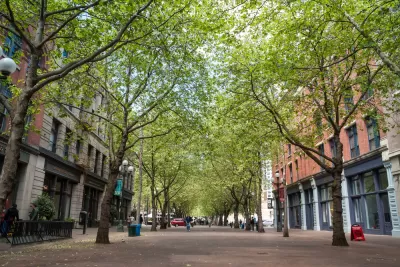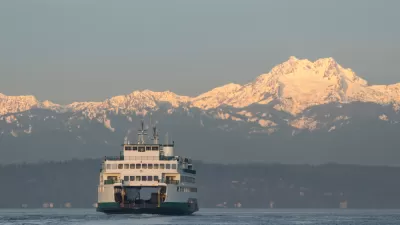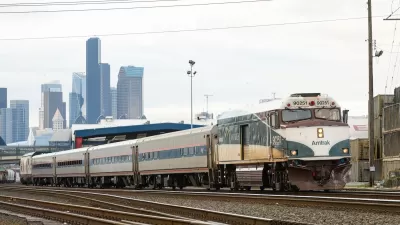Seattle shows how new buildings and new trees can be added to a city simultaneously—in fact, neighborhoods adding new buildings are maintaining its urban tree canopy while static single-family neighborhoods are losing trees.

Dan Bertolet shares news about Seattle's effort to grow and maintain its tree canopy even while building new residential and commercial buildings to keep pace with its rapid growth. There's a catch to the consequences of Seattle's population and economic growth.
Seattle’s best new data [pdf] on the change in tree canopy over time does show a 6 percent decline between 2007 and 2015. Here’s the catch, though: most of the confirmed tree loss happened on land reserved for detached houses, the single-family zones that cover over half the city but where population has barely budged for decades.
Meanwhile, the same study found no statistically significant change in tree canopy [pdf] where the growth actually has been happening: the land zoned for commercial buildings and multifamily housing that absorbed the vast majority of Seattle’s new apartments, offices, and stores.
Bertolet cites the data to build an argument against some opponents of development who would use trees as a prop in a narrative about he destructive consequences of urban infill as the city reconsiders its tree ordinance. "Tree preservation rules that would sacrifice new urban homes—that is, housing that can accommodate a lot of people on a small amount of land—becomes even more indefensible when you factor in the resulting shift of development pressure toward places where low-density housing construction obliterates far more trees," writes Bertolet.
The article then expands its purview to include analysis from Treepedia's Green View Index, which "quantifies how much tree cover a person at street level experiences," according to Bertolet. That tool allows comparisons between Seattle and other cities like Portland, Sacramento, Los Angeles, and Vancouver, British Columbia.
Bertolet's comprehensive, feature-length examination of Seattle's tree canopy didn't go unnoticed in Portland either. Rachel Monahan and Michael Andersen both picked up the story and applied its lessons to Portland.
FULL STORY: No, Seattle's Growth Boom Is Not a Tree Apocalypse

Planetizen Federal Action Tracker
A weekly monitor of how Trump’s orders and actions are impacting planners and planning in America.

Restaurant Patios Were a Pandemic Win — Why Were They so Hard to Keep?
Social distancing requirements and changes in travel patterns prompted cities to pilot new uses for street and sidewalk space. Then it got complicated.

Map: Where Senate Republicans Want to Sell Your Public Lands
For public land advocates, the Senate Republicans’ proposal to sell millions of acres of public land in the West is “the biggest fight of their careers.”

Maui's Vacation Rental Debate Turns Ugly
Verbal attacks, misinformation campaigns and fistfights plague a high-stakes debate to convert thousands of vacation rentals into long-term housing.

San Francisco Suspends Traffic Calming Amidst Record Deaths
Citing “a challenging fiscal landscape,” the city will cease the program on the heels of 42 traffic deaths, including 24 pedestrians.

California Homeless Arrests, Citations Spike After Ruling
An investigation reveals that anti-homeless actions increased up to 500% after Grants Pass v. Johnson — even in cities claiming no policy change.
Urban Design for Planners 1: Software Tools
This six-course series explores essential urban design concepts using open source software and equips planners with the tools they need to participate fully in the urban design process.
Planning for Universal Design
Learn the tools for implementing Universal Design in planning regulations.
Heyer Gruel & Associates PA
JM Goldson LLC
Custer County Colorado
City of Camden Redevelopment Agency
City of Astoria
Transportation Research & Education Center (TREC) at Portland State University
Camden Redevelopment Agency
City of Claremont
Municipality of Princeton (NJ)




























